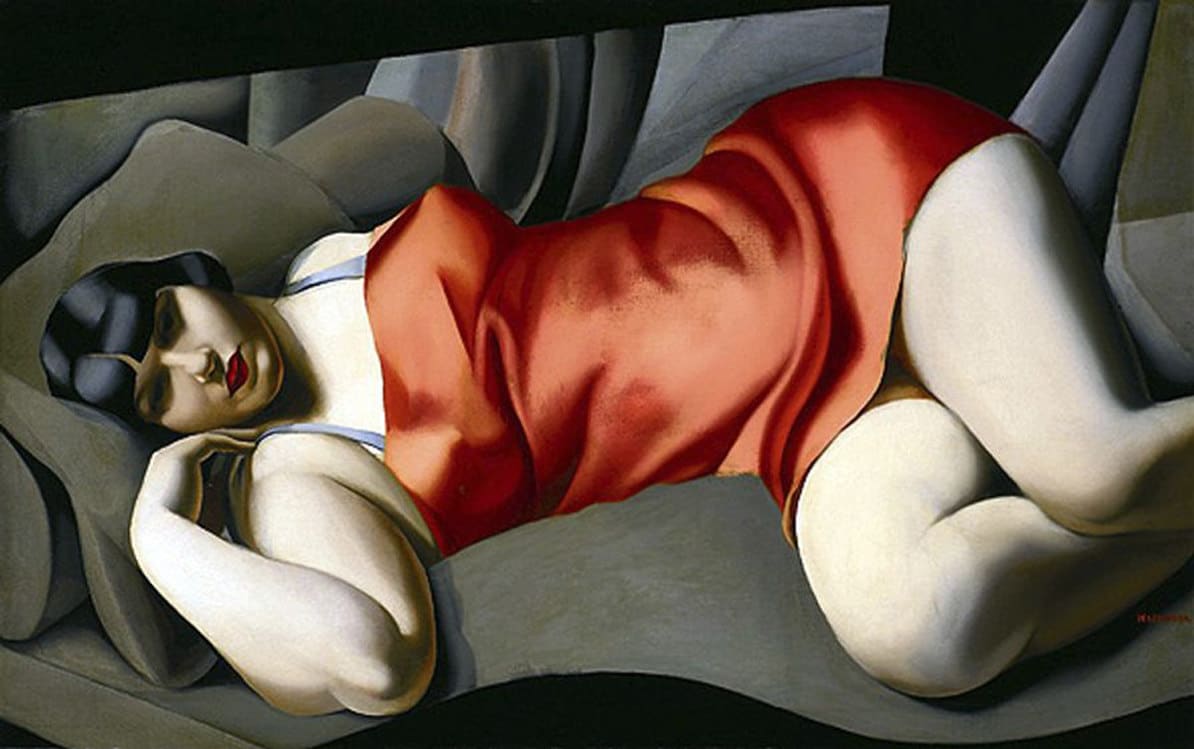Amazons of the New Art
JAN.30.2008 ──────── MAR.30.2008

Tamara de Lempicka
La tunique rose [The Pink Tunic], 1927
Private collection
The artists featured in the exhibition Amazons of the New Art cohabited, mingled and exhibited alongside the great male creators of each period on an equal footing. This exhibition aimed to substantiate their crucial role.
With the exhibition Amazons of the New Art we wanted to defend the role played by women in the development of modern art through the works of forty-one artists representing different movements and styles between the years of 1880 and 1950.
The exhibition brought together for the first time female artists of different nationalities, some of them virtually unknown, whose works in some cases, despite their undoubted value, had never been exhibited in Spain.
The Exhibition
The protagonists of the exhibition Amazons of the New Art were women who, apart from the odd exception, were at the forefront of the art world, playing an active role in the artistic movements of their epochs and contributing viewpoints that turned them into essential points of reference in the history of modern art.
The exhibition was structured into sections that grouped different artists together, taking into consideration the movement to which they belonged and the formal characteristics projected in their work.
The section entitled Turn of the Century covered artists from the late nineteenth through to the early twentieth centuries, who were pioneers in exhibiting in exhibition halls, such as Mary Cassatt, Anna Boch, Louise Breslau, Suzanne Valadon and Romaine Brooks.
The Around Expressionism section showcased artists such as Marianne von Werefkin, Kathe Köllwitz and Mela Muter, whose work at that time approached the formal pictorial treatment of the German movement.
The Brief Futurist Interlude section was dedicated to Valentine de Saint-Point, who was a key figure in this Italian movement.
The section entitled Russian Avant-garde Artists featured some of the most important protagonists of the artistic explosion that took place in the early twentieth century in Russia, such as Nathalia Goncharova, Liubov Popova, Alexandra Exter, Maria Vorobev Marevna and Olga Rozanova.
Towards Magical Realism brought together the work of María Blanchard, Suzanne Roger, Chana Orloff, Ángeles Santos, Marie Laurencin, Tamara de Lempicka, Meraud Guevara, Grethe Jürgens, Gerta Overbeck-Schenk, Charley Toorop, Frida Kahlo and Georgia O’Keeffe.
The section Under the Sign of Purism and Abstraction covered Marcelle Cahn, Francisca Clausen, Marthe Donas, Florence Henri, Katarzyna Kobro, Nadia Léger, Maria Nocz Borowiak and Sophie Taeuber-Arp, all artists who developed a language of pure lines and crisp colours.
The Photographic Era section presented the work of different artists who, though not necessarily exhibiting the same style, could be grouped according to their technique, including Claude Cahun, Dora Maar, Lee Millar and Florence Henri.
And finally, The Surrealist Constellation section encompassed less well-known painters such as Marie Toyen, Kay Sage and Maruja Mallo, alongside the English painter and poet Leonora Carrington.




